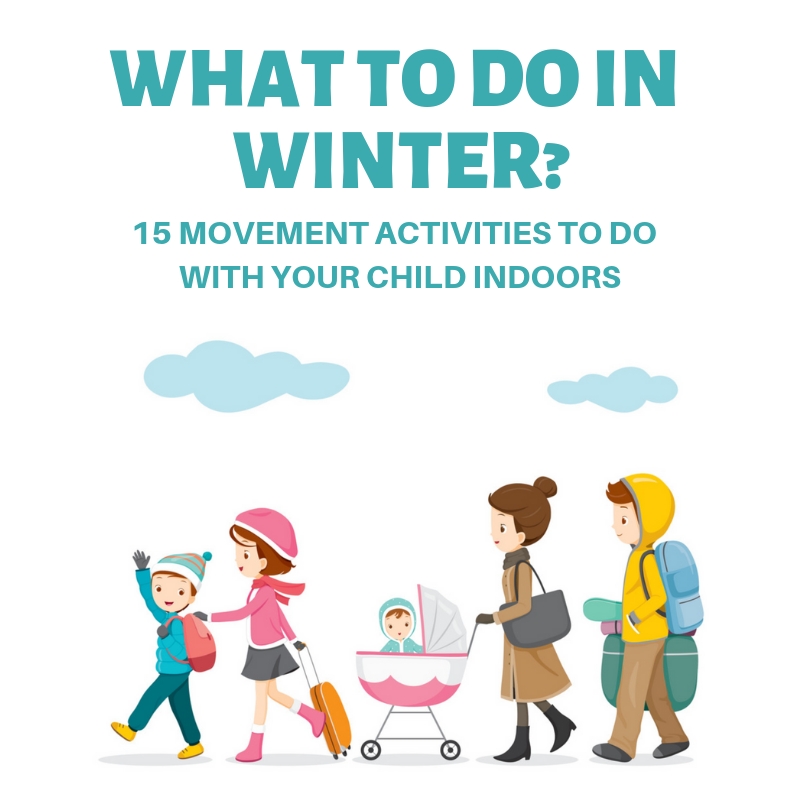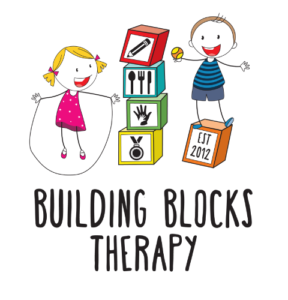
Winter can be a hard time to stay active!
Outside can be cold and wet, making it a tough time to keep engaged in sports and other gross motor activities. Below are 15 activities that you can do with your child to help develop their coordination, balance and other gross-motor skills, whilst giving an opportunity for you to spend some quality time with them!
1. Crazy Catch
Throw a bean bag (or a ball) back and forward to each other. Do a few normal catches to begin, then add in some ‘tricks’ that can be done before or during your throw! Both you and your child can come up with fun new tricks such as:
– Pass the beanbag behind your back
– Pass the beanbag under one leg
– Pass the beanbag through your legs in a figure of eight
– Place the beanbag on your head and turn around
– Place the beanbag on your head, sit down then stand up again
2. Garbage Collectors
Find some treasures/toys/beanbags around the house, and place them through the activity space (living room floor, playroom, bedroom). These objects are the ‘rubbish’. Find some buckets/hula hoops, and place them around the room to be our ‘garbage bins’
Take it in turns to come up with an action (crawl, dance, skip, gallop). You and your child then do this action as you collect all the ‘rubbish’ and place (or throw for an extra challenge) in the ‘bins’.
3. Tummy Skittles
You and your child take turns to lie on your tummy on the floor. You can then take turns to roll a ball to hit some skittles placed a few feet away. Alternatively, if you don’t have skittles, you could lie in the same position and throw a ball or beanbag into a target (a box or a hula hoop).
4. Hopping With The Leader
You and your child lead each other through a series of different hops.
• Hop in place on right foot, then left foot.
• Hop softly so you don’t make a sound.
• Hop side to side
• Hop forward, hop backwards.
• Hop forward and swing your arms.
• Hop five times in a row then change feet.
• Hop quickly then slowly.
• Hop forward in a straight line.
• Hop, then jump, then hop, then jump.
• Come up with some fun hops of your own!
5. Obstacle Course
Make an obstacle course at home by wrapping wool around bannisters, furniture and fixings. You can also move around furniture and toys like hula hoops for an added challenge!
6. Statues
You and your child move around the room in different ways (robot, jelly person, different types of animals, hopping, walking backwards) while music is playing. When you shout “freeze” they have to stop completely still. You could also do this where stopping the music means you need to freeze.
7. Stepping Stones
Set out a course of stepping stones using small mats, pieces of coloured card, hula hoops, plastic stepping stones or cushions. Ones that are flat on the ground will be easier; taller or less stable stepping stones will be more difficult. You and your child can take turns at this activity, and build it together. To encourage them to go slowly you could make it into a game, such as don’t wake the pirate (wolf/witch/etc…) where you turn your back and listen out for the person sneaking across the stepping stones. This activity can work great involving the whole family!
8. Tightrope Walk
Make a path along the floor using tape or string. You and your child can take turns to walk along it slowly, with the heel of the front foot touching the heel of the back foot, like a tightrope walker. Try to keep the feet straight on the line.
You can add a challenge to this activity by using straight, curved and diagonal lines. You can walk with or without shoes. You can walk, run, crawl or roll, or drive a toy car along it. Draw a design on a piece of card and see if your child can copy this with the string.
9. Simon Says
Simon Says is a great inside activity to practice moving and listening. Play this game with the whole family. Start with an adult playing as “Simon” and giving instructions (such as “touch your head”). The children follow these instructions, only when “Simon says” is said first. Once your child gets the hang of them, let them have a turn of being “Simon”
10. Animal Walks
Have some races doing “animal walks” such as:
Crab walk: walking on hands and feet with your back to the ground.
Frog jump: Jumping along while crouching.
Penguin walk: waddling.
You and your child can come up with some of your own animals and imagine how they would walk.
11. Mirror Mirror
Stand facing your child. You are going to be each other’s mirror. You can be the mirror first. Move your body into different positions – your partner must copy you as smoothly as possible. Now swap over so the other person is the leader.
12. Dance Party!
Put on your child’s favourite music, and take turns to come up with a dance move for the other to copy! You can dance around the room, or set up some obstacles to move around. You can give guidance such as “lets do a dance low to the ground, lets do a fast dance, lets do a quiet dance”.
13. Towers
Have your child stand in a positon and pretend to be a ‘tower’. You then pretend to be a giant wind or storm by gently poking and pushing them to try and make them fall over. The point is not for the child to fall but to encourage them to use their core muscles to resist the push and stay upright and very still. You can however push them over every now and again to add to the fun.
14. Clapping Game
Sit facing the child. Tap your hands on your knees in rhythm with each other. Now try the following patterns:
Alternate between palms down and palms up.
Alternate between tapping on your knees and clapping your partner’s hands.
Tap your knees then clap your right hand to your partner’s right hand, then clap your knees and clap your left hand to your partner’s left hand.
What other patterns can you think up?
15. Handshakes
Make up a ‘secret handshake’ for you and your child. Start simple with hi-fives and simple movements. Start to add steps to the handshake including fist-bumps, jumps, poses and whatever else you can think of! How many steps can you remember?
16. Inside Treasure Hunt
Identify a piece of treasure (beanbag/marble etc.). Take turns with your child to hide the treasure, and then give a clue to find it. If a player gets stuck, use ‘warmer’ and ‘colder’ clues to help them out. The hider can also give an instruction (e.g. find it while crawling, find it while hopping), just make sure the treasure can be found while doing that action!
Natalie Freak
Occupational Therapist
